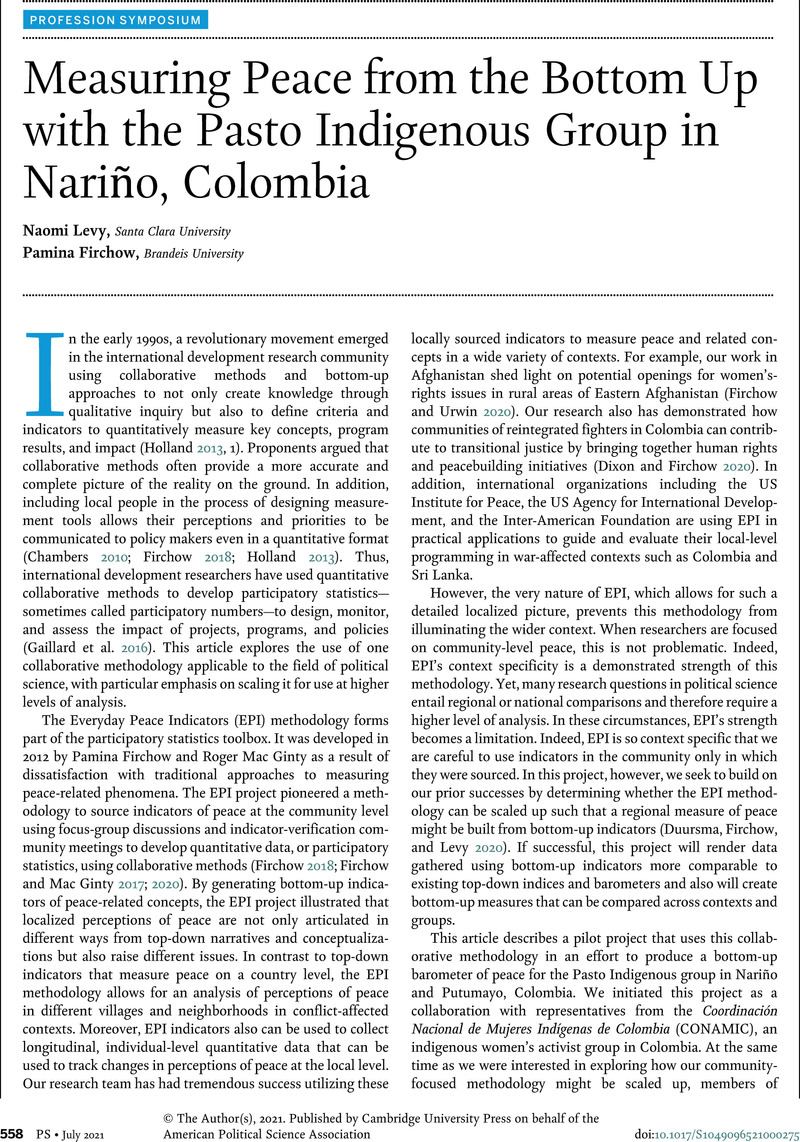Crossref Citations
This article has been cited by the following publications. This list is generated based on data provided by Crossref.
Dorussen, Han
Bakaki, Zorzeta
and
Kolbe, Athena R.
2021.
Challenges of Using Collaborative Methodologies in Surveying Political Trust in Haiti.
PS: Political Science & Politics,
Vol. 54,
Issue. 3,
p.
570.
Flores, Thomas Edward
2021.
Everyday Democracy Indicators? How the Study of Democracy Illuminates the Value (and Challenges) of Collaborative Methodologies.
PS: Political Science & Politics,
Vol. 54,
Issue. 3,
p.
565.
Mitra, Ankushi
Kline, Curtis
and
Bautista-Chavez, Angie M.
2024.
Civically engaged research in political science: a methodological guide.
Politics, Groups, and Identities,
p.
1.
Dixon, Peter
Firchow, Pamina
and
Vera-Adrianzén, Fiorella
2024.
The Paradox of Justice: From Transitional to Everyday Justice.
Law & Social Inquiry,
Vol. 49,
Issue. 1,
p.
26.



